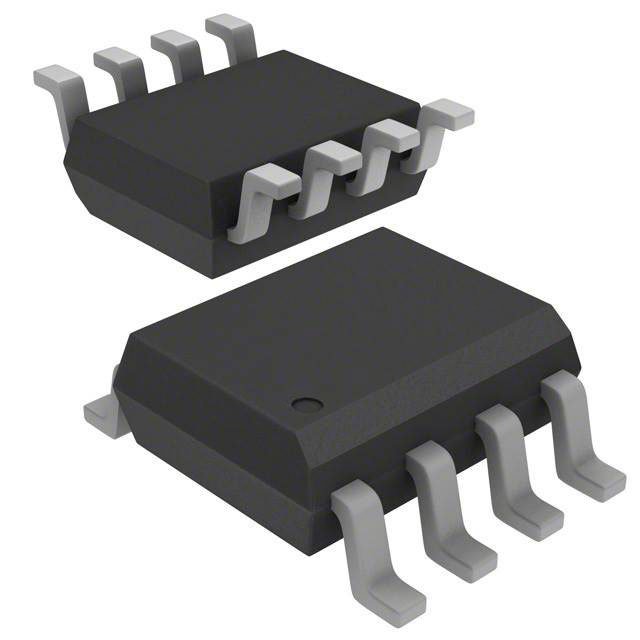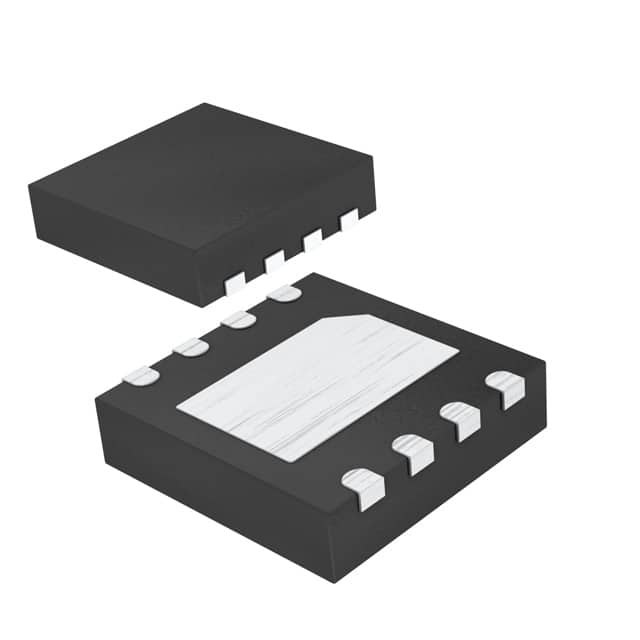Ⅰ. PMIC - Supervisors
Ⅱ. Physical Characteristics of PMIC - Supervisors
Ⅲ. Electrical Characteristics of PMIC - Supervisors
PMIC supervisors, also known as voltage supervisors or reset generators, are an essential component of a Power Management Integrated Circuit (PMIC). They provide monitoring and control functions to ensure proper power sequencing, reset generation, and system stability.

The primary function of PMIC supervisors is to monitor the power supply voltages and generate reset signals when specific voltage conditions are met. These reset signals are typically used to initialize or reset the system's microcontroller, microprocessor, or other critical components during power-up or in the event of a fault or abnormal condition.
Here are some key aspects and features associated with PMIC supervisors:
1.Voltage Monitoring: PMIC supervisors monitor power supply voltages to ensure they remain within specified voltage thresholds. Commonly monitored voltages include the main system power supply (VCC) and various supply rails such as 3.3V, 1.8V, and 1.2V. The supervisors compare the monitored voltages against predetermined threshold levels to determine if they are within acceptable ranges.
2.Reset Generation: When the monitored voltage falls below or rises above the predetermined threshold levels, PMIC supervisors generate reset signals. These reset signals are used to initiate a system reset, ensuring a controlled and reliable startup or recovery from fault conditions. The reset signals can be active-low or active-high, depending on the design and requirements.
3.Power Sequencing: PMIC supervisors help manage the power-up and power-down sequencing of various power domains within the system. They ensure that different power supplies are turned on and off in the correct order to prevent any potential issues, such as latch-up, excessive current surges, or data corruption.
4.Reset Pulse Width: PMIC supervisors provide configurable reset pulse widths, allowing system designers to set the duration of the reset signal. This feature ensures compatibility with different microcontrollers or processors that may have specific reset timing requirements.
5.Debounce and Delay: PMIC supervisors often incorporate debounce and delay circuits to prevent false reset signals due to power supply transients or voltage fluctuations. These circuits add stability and reliability by filtering out brief voltage glitches or noise that could trigger false resets.
6.Power-On Reset (POR): PMIC supervisors typically include a power-on reset function, which generates a reset signal when the power supply is first applied. This ensures a controlled startup sequence and initializes the system to a known state.
7.Watchdog Timer: Some PMIC supervisors may incorporate a watchdog timer feature. This timer generates a reset signal if the system fails to refresh the watchdog within a specified time period. It provides a mechanism to detect and recover from software or hardware failures, ensuring system reliability.
PMIC supervisors play a vital role in ensuring the stable and reliable operation of electronic systems. They monitor power supply voltages, generate reset signals, manage power sequencing, and provide various features to enhance system stability and robustness.
Physical Characteristics of PMIC - Supervisors
The physical characteristics of PMIC supervisors can vary depending on the specific design and packaging of the integrated circuit. However, there are some common physical characteristics associated with these components. Here are the typical physical characteristics of PMIC supervisors:
1.Package: PMIC supervisors are typically integrated into the overall package of the PMIC itself. The package can be a small surface-mount package, such as a QFN (Quad Flat No-leads), BGA (Ball Grid Array), or a flip-chip package. These packages are compact and suitable for integration into electronic systems.
2.Pin Configuration: PMIC supervisors have specific pins for power supply connections, voltage monitoring inputs, and reset output signals. The power supply pins provide the necessary voltage and ground connections for the supervisor circuitry. The voltage monitoring pins are connected to the power supply voltages that need to be monitored. The reset output pins provide the reset signals that are triggered based on the voltage thresholds.
3.Die Size: The physical size of the supervisor circuitry within the PMIC can vary depending on the design and functionality. The die size is typically small to accommodate integration with other components on the chip.
4.Manufacturing Technology: PMIC supervisors are manufactured using semiconductor fabrication processes. The manufacturing technology can vary, such as CMOS (Complementary Metal-Oxide-Semiconductor), BCD (Bipolar-CMOS-DMOS), or BiCMOS (Bipolar-CMOS) technologies. The choice of technology depends on factors like power requirements, precision, and cost considerations.
5.Temperature Range: PMIC supervisors are designed to operate over a specified temperature range. The temperature range depends on the intended application and the target operating conditions of the electronic system. It is essential to ensure that the supervisor remains reliable and accurate across the specified temperature range.
6.Input and Output Specifications: PMIC supervisors have specific input voltage requirements for power supply connections and voltage monitoring inputs. These specifications define the acceptable voltage ranges for proper operation. The output specifications determine the characteristics of the reset signals, such as voltage levels, output current capability, and logic levels (e.g., TTL or CMOS).
7.Package Markings: PMIC supervisors typically feature package markings that provide important information such as the manufacturer's logo, part number, date code, and other relevant identifiers. These markings assist in component identification and traceability.
These are some of the physical characteristics associated with PMIC supervisors. The specific details and features may vary depending on the specific PMIC design, targeted application, and manufacturing process.

Electrical Characteristics of PMIC - Supervisors
The electrical characteristics of PMIC supervisors are crucial specifications that define their functionality and performance. These characteristics ensure accurate voltage monitoring, reliable reset generation, and proper power sequencing. Here are some common electrical characteristics associated with PMIC supervisors:
1.Supply Voltage Range: PMIC supervisors have a specified supply voltage range within which they operate. This range determines the acceptable voltage levels for the power supply connections. It is important to adhere to this range to ensure proper functionality and reliable operation of the supervisor.
2.Voltage Thresholds: PMIC supervisors define specific voltage thresholds that are used to trigger the generation of reset signals. These thresholds determine the voltage levels at which the supervisor considers the power supply voltages to be within acceptable limits or in an abnormal condition. Typically, there are separate thresholds for undervoltage (UV) and overvoltage (OV) conditions.
3.Hysteresis: Hysteresis is a feature that provides a margin or a voltage range between the trip points of the voltage thresholds. It helps prevent oscillation or rapid toggling of the reset signal when the power supply voltage is near the threshold level. Hysteresis ensures stability and prevents false triggering of the reset signal.
4.Reset Output Type: PMIC supervisors can have different types of reset outputs, such as open-drain or push-pull. An open-drain output requires an external pull-up resistor to define the logic levels, while a push-pull output actively drives the reset signal to high or low logic levels. The choice of reset output type depends on the system requirements and interfacing considerations.
5.Reset Pulse Width: The reset pulse width is the duration for which the reset signal remains active after being triggered by a voltage violation. It is typically specified in milliseconds or microseconds. The reset pulse width ensures that the reset signal remains active for a sufficient time to initiate a proper system reset.
6.Power Sequencing: PMIC supervisors may have power sequencing capabilities to manage the order in which various power supplies are turned on and off. This feature ensures proper power-up and power-down sequences, preventing potential issues like latch-up or excessive current surges during system operation.
7.Current Sourcing/Sinking Capability: The current sourcing or sinking capability of the reset output determines the maximum current that the supervisor can provide to or draw from external circuitry when the reset signal is active. It is essential to ensure that the supervisor can supply or sink enough current to meet the requirements of the connected components.
8.Input and Output Logic Levels: PMIC supervisors have specific input and output logic levels that determine the voltage ranges corresponding to logic high and logic low states. These logic levels are important for proper interfacing and compatibility with other digital circuitry in the system.
9.Operating Temperature Range: PMIC supervisors are designed to operate within a specified temperature range. This range indicates the ambient temperature conditions under which the supervisor can function reliably. It is crucial to consider the operating temperature range to ensure the supervisor's performance and longevity in various environmental conditions.
These electrical characteristics of PMIC supervisors play a critical role in their proper operation, ensuring accurate voltage monitoring, reliable reset generation, and effective power sequencing within electronic systems.
标签:PMIC supervisors



